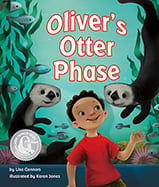Alignment to CORE and NGSS Standards

| Grade | Number | Standard |
|---|---|---|
| 1 | NGSS: 1-LS1.A: | All organisms have external parts. Different animals use their body parts in different ways to see, hear, grasp objects, protect themselves, move from place to place, and seek, find, and take in food, water and air. Plants also have different parts (roots, stems, leaves, flowers, fruits) that help them survive and grow. (1-LS1-1) |
| 1 | NGSS: 1-LS1.B | Adult plants and animals can have young. In many kinds of animals, parents and the offspring themselves engage in behaviors that help the offspring to survive. (1-LS1-2) |
| 1 | RI.1.9 | Identify basic similarities in and differences between two texts on the same topic. (story versus For Creative Minds non-fiction component) |
| 1 | RL.1.5 | Explain major differences between books that tell stories and books that give information, (paired fiction & For Creative Minds non-fiction) |
| 2 | RI.2.4 | Determine the meaning of words and phrases in a text relevant to a grade 2 topic or subject area: Earth processes: quickly/slowly, wind/water shape land, plate tectonics, maps, water: ocean/rivers/lakes-solid or liquid, STEM: drawings, plant basic needs, seed dispersal, biodiversity, state of matter: solid/liquid, small objects make larger, heating/cooling substance causes observable change, add/subtract 100-20 mentally, equal groups for multiplication foundation, odd/even numbers, place value 3 digits, skip counting, measure length using 2 different measurements (inches/feet/yard/cm/m), compare objects by measurement, number line, time to 5 minutes, money/currency, line plot, picture graph, bar graph 4 categories, shapes/angles/number faces, divide shapes into halves, thirds, quarters, fables/folktales from diverse cultures, rhyme and rhythm, compare two/more versions same story, collective nouns |
| 2 | RI.2.9 | Compare and contrast the most important points presented by two texts on the same topic. (story versus For Creative Minds non-fiction component) |
| 3 | L.3.6 | Acquire and use accurately grade-appropriate domain-specific words and phrases: Weather prediction, weather versus climate, natural hazards, life cycles, changing environments: organisms survive/move/adapt/die, animal group behavior, inherited traits, instinct/learned behavior, extinct animals, fossils, individual advantages survival/mating, habitat survival: physical/behavioral adaptations, living things change habitats, force/motion: strength/direction/electric/magnetic, multiplication/division, unknown number m/d equation, m/d fact families, two-step word problems, place value rounding, fractions, time to minute, liquid volumes, scaled picture graph/bar graph, measurements to fractional inches, line plot, area, square units, area=multiplication/division, perimeter, shapes in different categories (rhombus/rectangle=quadrilateral), divide shapes by equal area, fables/folktales/myths from diverse cultures, compare/contrast stories from same author/series, |
| 3 | RI.3.9 | Compare and contrast the most important points and key details presented in two texts on the same topic. (story versus For Creative Minds non-fiction component) |
| 4 | NGSS: 4-LS1.A | Plants and animals have both internal and external structures that serve various functions in growth, survival, behavior, and reproduction. (4-LS1-1) |
| 4 | RI.4.4 | Determine the meaning of general academic and domain-specific words or phrases in a text relevant to a grade 4 topic or subject area: Rock formations show earth forces (earthquakes) and age, fossils, rainfall shapes land, rocks/soils/sediments moved by earth/water/living things, plate tectonics: location of mountain ranges/deep ocean trenches/earthquakes/volcanoes with maps to locate, Living things affect the physical characteristics of their regions, natural resources=renewable/non-renewable, natural hazards: earthquakes/tsunamis/volcanoes, plants/animals internal/external structures for growth/survival/behavior/reproduction, senses, fast-moving objects have more energy, energy moves through sound/light/electric currents, colliding objects may make sound, light transfers energy/produces heat, colliding objects change course, produce energy, wave motion, technology moves information over long distances, multiplication/division fact families with unknown numbers, factor pairs for whole numbers to 100, prime/composite numbers, number/shape patterns, multi-digit numbers/place value and compare with symbols (>,=,<), place value rounding, add/subtract multi-digit numbers, long division, fraction equivalents and comparisons, add/subtract mixed numbers like denominators, add/subtract fractions, multiply fraction by whole number, decimals, compare decimals to hundredths, measurement conversions, area/perimeter, line plot fractions, angle measurements whole numbers w protractor, points/lines/line segments/rays/angles/perpendicular/parallel lines, classify triangles, line of symmetry in two-dimensional figure, natural hazards), energy) |
| 5 | NGSS: 5-LS1.C-1 | Food provides animals with the materials they need for body repair and growth and the energy they need to maintain body warmth and for motion. (secondary to 5-PS3-1) |
| 5 | RI.5.5 | Compare and contrast the overall structure (e.g., chronology, comparison, cause/effect, problem/solution) of events, ideas, concepts, or information in two or more texts. (Paired reading-story versus For Creative Minds non-fiction component) |
| K | NGSS: K-LS1.C | All animals need food in order to live and grow. They obtain their food from plants or from other animals. Plants need water and light to live and grow. (K-LS1-1) |
| K | RI.K.9 | With prompting and support, identify basic similarities in and differences between two texts on the same topic. (comparing story to For Creative Minds non-fiction component) |
| K-5 | Dewey | [E] |
| K-5 | Dewey - Fiction | Fiction |